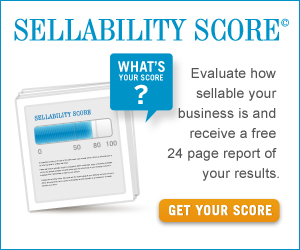
Photo by: wsilver licensed under Creative Commons Attribution 2.0 Generic
Oftentimes, we hear on the news that the markets have crashed, but bear in mind that the media frequently dramatize events and make it seem as if things are really crazy. While things may become a little hectic, the real question is how you respond to such events. In today’s blog post, I will talk about the things you could do in the event of a market crash and the 4 Don’ts and 5 Do’s in terms of your financial affairs during these times.
Generally speaking, when a market crash occurs, there are four classic things that you could do with your money:
- Invest an additional sum of money—the best time to buy is when things are the cheapest, and things are cheapest when the market is down.
- Keep everything where it is—in addition, you could choose to start a monthly contribution plan.
- Don’t do anything—you wouldn’t add or take away anything. You could simply choose to ride it out.
- Take a defensive stance—this means you could sell your position, get out of the market, put it into cash, and re-enter the market when it is back to normal. Emotions tend to drive this option, but I highly suggest that you don’t let your emotions dictate your investment decisions.
It’s important to remember that for every crisis, there’s an opportunity. When the market crashes, we weigh our options and decide which of them we should take. History has shown that the more violent the correction, the more rapid the recovery. So what should and shouldn’t we do in these times of opportunity?
4 Things You Should NOT do
1. Don’t Panic
People panic when they are afraid of the unknown. Panicking affects your emotions and your rationality, and you will end up making poor financial decisions as a result. Recognize that a negative market event is a requirement for above average returns. So embrace the fact that when the markets turn south, this is setting your portfolio up for a positive future.
2. Don’t Talk to Your Friends
People only talk about their successes. Your friends are not going to tell you about the failures that they’ve had. The truth is, most of your friends are simply bragging about small, short-term successes. The reality, however, is that those big, short-term successes don’t often translate into sustainable long-term returns.
Talk to a CFP instead because they are trained to understand what a market crash means on a global level. They will really help you figure out your next step.
3. Don’t Sell to Stop the Bleeding
This option is essentially choosing option number four: selling for a perceived “defensive” stance. People want to wait until the market is stabilized before they re-invest in the market because this makes them feel better. However, the reality is that more often than not, these “defensive” investors miss out on some of the greatest gains because they let their emotions dictate their investment decisions. Just think about it logically—the formula for profits is to “buy low and sell high”, not “buy high, hoping to sell at a higher point.” The latter is known as “the greater fool theory.” A fool buys a security without paying any attention to the actual value of that security in the hopes that they can find a greater fool to sell it to in the future at a higher price. Take a moment to think about that. Simply put, investing is all about paying the right price for something and the right price is more often than not present right after a market setback. This is called in simple terms “a sale.”
4. Don’t Be Uneducated
Make sure you talk to a financial planner. It is important to understand the situation at hand and discuss the plan and strategy with your financial planner. One of your options is to listen to our Fly on the Wall webinar series and listen in while I talk to various investment professionals and portfolio managers that we work with and get firsthand information on the status of the market. Remember to stay informed and understand the fundamentals of what you are dealing with.
5 Things You SHOULD Do
1. Educate Yourself
This tip essentially reiterates the last point in the previous list. Educate yourself so that you and your financial planner both understand the plan and the strategy.
2. Align Yourself with a Discretionary Investment Firm
Ensure that you are making the right decisions with an investment firm that can implement your portfolio strategy and work on your behalf to take advantage of any opportunities that present themselves. Discretionary management allows advisors to make decisions for their clients based on the discussions they have had and the investment policy statement that has been put in place. Make sure that this is properly set up because you are protected if your portfolio manager ventures outside of these boundaries. They can become liable for doing so.
3. Consider Tax Loss Selling
When the markets are down by a significant percentage, you can trigger that loss by choosing to sell an investment, and then re-invest it in another version of your current portfolio. This allows you to avoid the superficial loss rule in Canada, which states that you are not allowed to claim a loss that you triggered by selling and then repurchasing the same security. Selling an investment and re-investing it in a different version essentially allows you to sidestep this rule.
Now, you can take the loss that you triggered and offset any taxes that were paid on any gains you had prior to the current year. So if you had paid taxes on a capital gain within the past three years, you can reclaim that loss and get some money back. Similarly, you can also take that loss that you triggered and carry it forward indefinitely. This will allow you to offset any future gains with some capital losses.
4. Make Sure You Don’t Get Caught in the Paperboy Syndrome
If your paperboy qualifies for the same type of investments that you are in, consider migrating your portfolio to a more appropriate investment solution that is better suited and priced for your level of investment account. Watch out for the three thresholds. If your portfolio is:
Less than $100,000—mutual funds are ideally suited for you (good diversification; something anybody can purchase)
$100,000 and above—start hiring your own portfolio manager and investment counselling firm to work with (really direct and customized management tailored to each individual)
5. Recalibrate Your Financial Plan
Whenever the markets drop by a certain level, it is understandable that you would have a lot of unanswered questions. Recalibrating your financial plan could be called the first thing you should do. It means taking your plan and keying in the current values so that you would know what you are working with. Work with your financial planner to answer all your questions and find out how the market crash would affect your financial decisions and goals. You can check out the report at our website called 12 Key Questions You Must Ask a Financial Advisor Before You Hire One. It will help you get involved with a financial planner and begin the process of managing your finances.
Related Links
How to Choose a Financial Planner
https://www.ironshield.ca/landing/how-to-choose-and-work-with-a-financial-planner-you-can-trust/
Fly on the Wall Update Calls
https://www.ironshield.ca/blog/fly-on-the-wall-update-calls/












